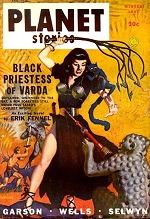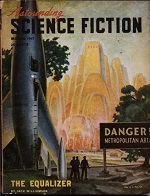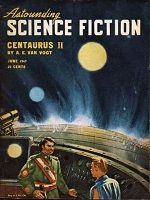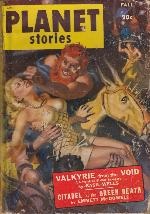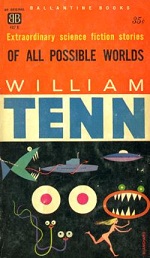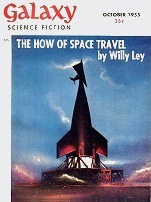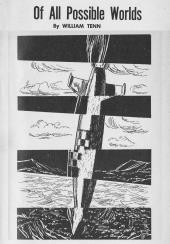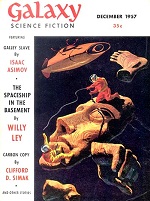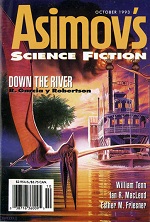Short Story
Me, Myself and I
- by William Tenn
- in Planet Stories, Winter 1947
As an experiment, a scientist sends unemployed strongman Cartney back 110 million years to make a small change. He makes this first change, which changes things in the present, and then he must go back again and again, whereupon he meets himself and him.
I keep finding earlier and earlier stories with the idea of destroying mankind by squishing a bug, and I am wondering whether this is the earliest linchpin bug (although that doesn’t actually happen here).
I keep finding earlier and earlier stories with the idea of destroying mankind by squishing a bug, and I am wondering whether this is the earliest linchpin bug (although that doesn’t actually happen here).
Maybe tomorrow you’ll be visiting your great, great grandmother.

